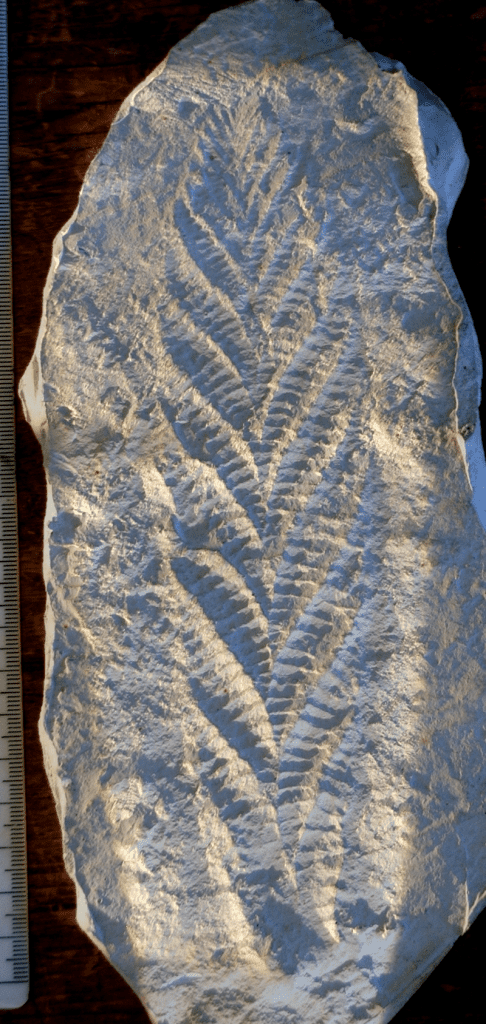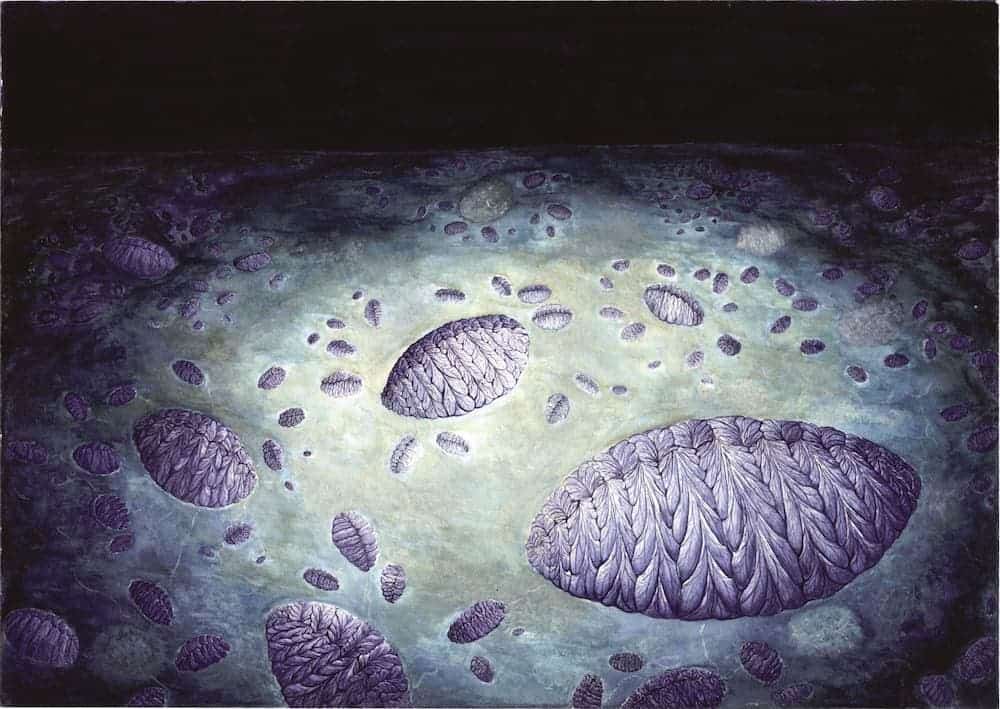Before the Cambrian, more than 541 million years ago, intriguing creatures named rangeomorphs that grew up to 2 meters dwelt in marine environments. They were unable to move, had no apparent reproductive organs and there is no evidence of them having a gut or a mouth. But a new study has found that their reproductive techniques were surprisingly complex – and surprisingly familiar.

To a casual observer, rangeomorphs would look more like plants than animals. They have at times been aligned to a range of modern animal and protist groups, but none of these classifications has stood the test of time – they are an extinct stem group to either the animals or fungi. They’re also a part of the spectacular Ediacaran fauna, the mysterious tubular and frond-shaped, mostly sessile organisms that lived during the Ediacaran Period (ca. 635–542 Ma).
Even among these strange animals, rangeomorphs stand out.
“Rangeomorphs don’t look like anything else in the fossil record, which is why they’re such a mystery,” lead study author Emily Mitchell, a postdoctoral researcher in Cambridge’s Department of Earth Sciences, said in a statement. “But we’ve developed a whole new way of looking at them, which has helped us understand them a lot better — most interestingly, how they reproduced.”
Mitchell and her colleagues looked at rangeomorph fossils in Newfoundland, Canada, and analyzed where the fossils were found one in relationship to another. Because they were immobile, well preserved fossils can show how entire ecosystems lived. They then used a combination of statistical techniques, high-resolution GPS and computer modeling and found an intriguing pattern in population distributions.
According to that analysis, Fractofusus, a type of rangeomorphs, would eject “grandparents” (think of them as seeds or spores) into the water to colonize new areas. They would then produce “parents” and “children” using stolons, or runners — cloned organisms connected to each other, much like strawberries grow today. The distribution of grandparents was random, while smaller parent and children populations were scattered around them.
The “generational” clustering suggests that Fractofusus reproduced asexually but it’s still unclear if the waterborne seeds or spores were sexual or asexual in nature.
“Reproduction in this way made rangeomorphs highly successful, since they could both colonize new areas and rapidly spread once they got there,” said Mitchell. “The capacity of these organisms to switch between two distinct modes of reproduction shows just how sophisticated their underlying biology was, which is remarkable at a point in time when most other forms of life were incredibly simple.”

This is not the first time a clustering reproduction was reported in pre-Cambrian. A 565-million-year-old tubular invertebrate named Funisia dorothea also reproduced in clusters, according to a 2008 study published in the journal Science. Furthermore, this technique is still used today by corals and sponges.
Rangeomorphs disappeared from the fossil record 540 million years ago as more complex and mobile creatures evolved, making them sitting ducks; it’s difficult to link them to any modern animals, but their technique still survives to this day, a remarkable relic from an inconceivably old period.






